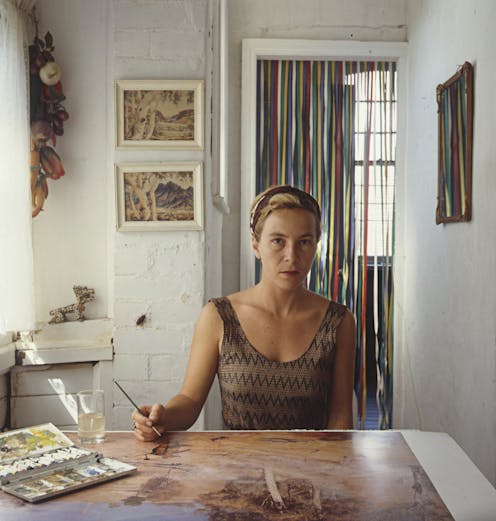
The first work I saw by the Australian photo-media artist Anne Zahalka was her regendered version of Tom Roberts’ A Break Away! (1891). In Zahalka’s 1985 rendering, the heroic rider has been given a plait.
It was part of her series The Landscape Re‑presented, where the young artist had used photomontage to change heroic images of Australian art into a gender-inclusive multicultural Australia.
This was the body of work that in 1986 persuaded the Australia Council to award Zahalka a year-long residency at Berlin’s Künstlerhaus Bethanien. The experience of Berlin, with its great art and embedded history, opened the eyes of this child of refugees to her European heritage.
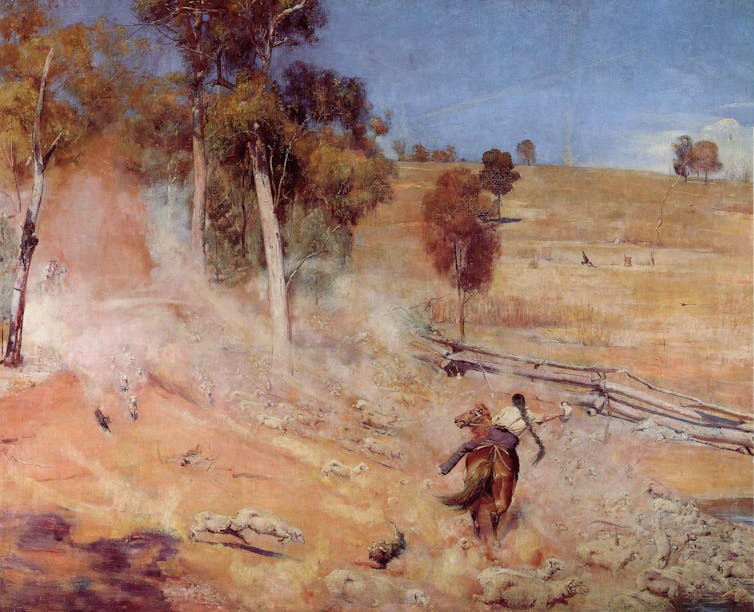
Honouring art
The result was Resemblance, comprised of large-format Cibachrome photographs honouring the art she saw.
Most works evoke the sentiment rather than individual works.
The hero of these photographs is the light that sharply defines the objects that give the subjects their identity.
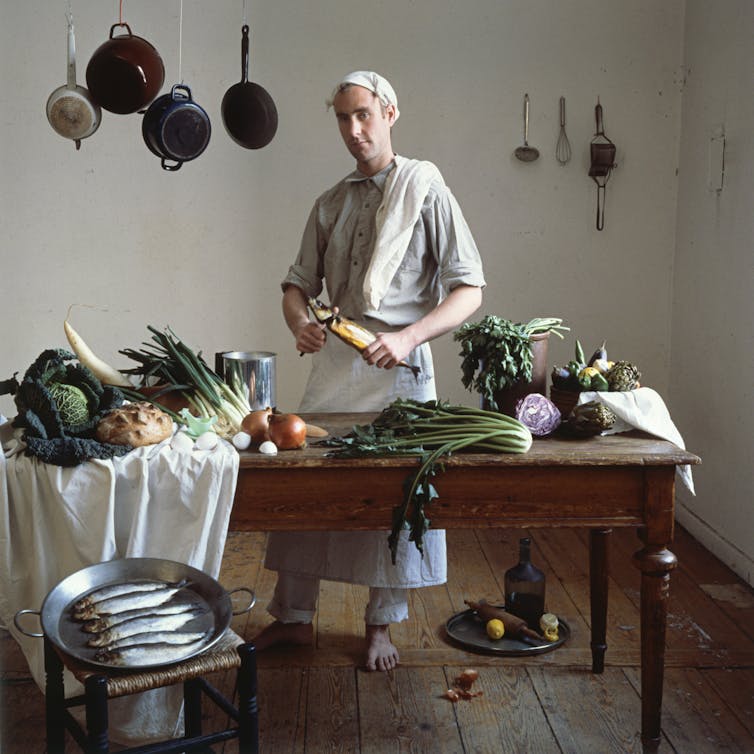
The one work that directly quotes an actual painting is Marriage of Convenience (Graham Budgett and Jane Mulfinger), a modern retake of The Arnolfini Portrait, the 15th-century painting that revolutionised western art.
Zahalka even places a reflection of herself in the painting, a tribute to the way Jan Van Eyck inserted himself into the original.
On the beach
On her return to Australia, Zahalka began to experiment with digital photography. At first she manipulated elements of the works she had made in Berlin. Fragments of photographs are modified, duplicated and even turned into Rorschach images.
Living in Bondi, she started to consider the difference between images of the iconic beach as a bastion of bronzed Anglo-Australia and its multicultural reality.
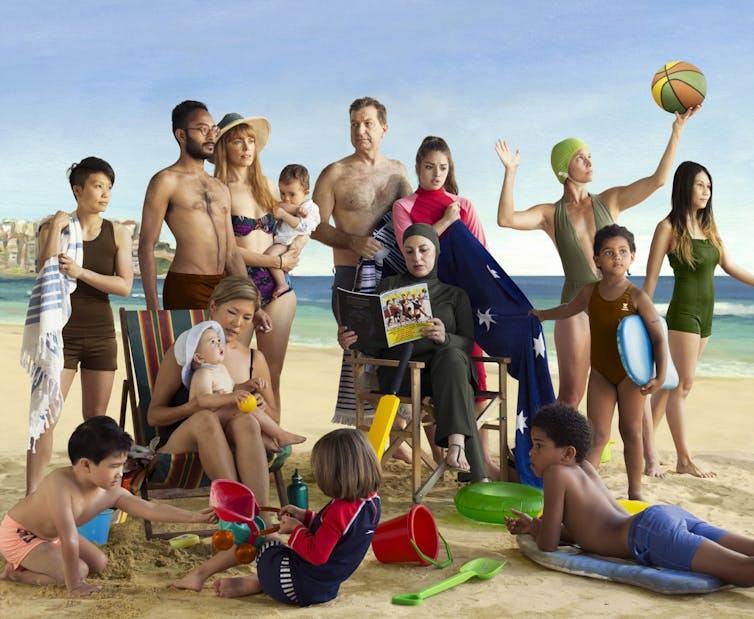
Her series Bondi: Playground of the Pacific gave the beach a multicultural tweak that was closer to reality. It showed the variety and energy of visitors to Bondi, from tanned beach inspectors to Japanese surfers.
Some years later, in the series Welcome to Sydney, a commission from the international airport, she photographed an Orthodox Jewish rabbi and his family on the sand at Bondi Beach.
Exploring the transient
Zahalka says she really values the many residencies that have enabled her to make extended series of works.
Hotel Suite (2008) is the result of a residency at Melbourne’s Hotel Sofitel. The transient nature of hotel life prompted her to make a series of implied narratives.

A half-clad prepubescent girl sits on a bed, her clothes in a tangle on the floor.
A maid looks at a book in a room she has cleaned.
One photograph of a suited man holding his head in grief echoes the controlled desperation of John Brack’s Collins St, 5pm (1955), which hangs in the background. The man is the artist’s husband, who had been watching a football game where his team lost – a very Melbourne experience.
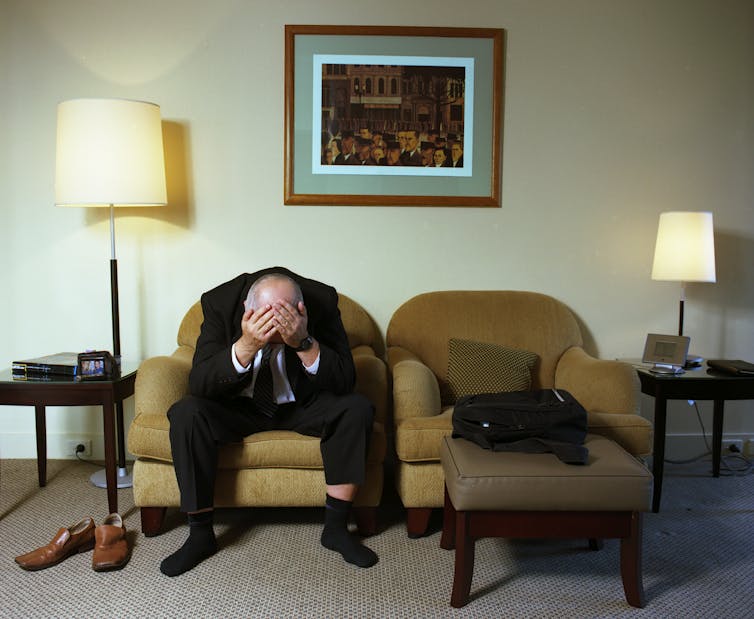
Photography and the anthropocene
When Zahalka first visited New York’s Museum of Natural History, she remembered how Holden Caulfield in J.D. Salinger’s The Catcher in the Rye had admired the static quality of the painted dioramas acting as a background to examples of the taxidermists’ art.
She has since visited many natural history museums photographing, then manipulating, those heroic images of nature painted over a century ago. The placing of stuffed animals and birds in a painted wilderness gave city dwellers a sense of places they could never see.
In some images she has inserted tourists – the modern hobby of exploring the wilderness is another factor in its degradation.
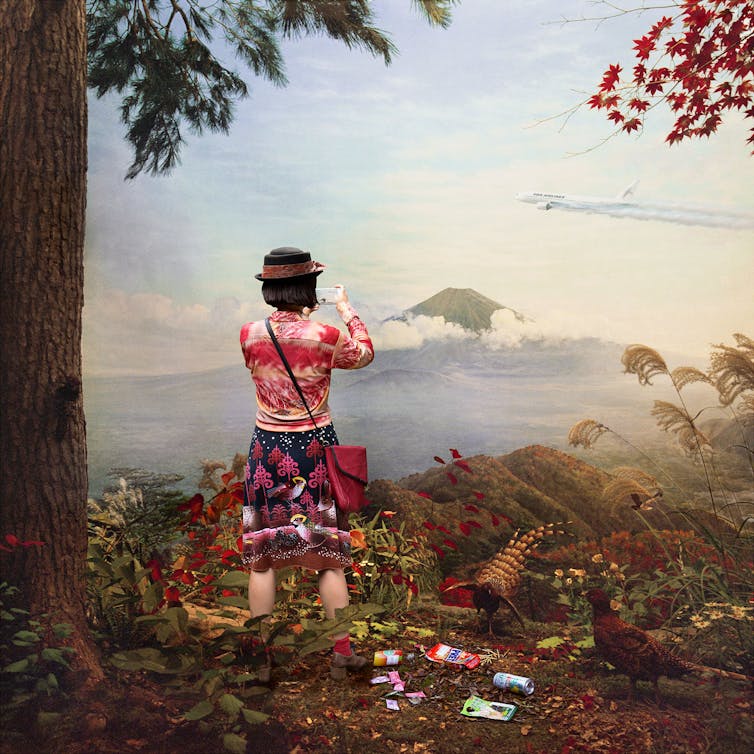
Zahalka’s photographs both honour the unnamed artists of the past and comment on what is happening to the land in this age of the Anthropocene.
The water level on painted island scenes is changed to show the impact of rising tides from melting ice on a heating planet. Paintings of ancient rocks and clear streams have been modified to show the deep cracks and polluted streams from fracking.
They act as a warning: humanity continues to wreck what it claims to admire.
Some of the most powerful photographs in the series are of the Lord Howe Island diorama at the Australian Museum. In one version Zahalka has photographed it at full scale, in monochrome. This enables her to insert, in colour, the polluting plastics that attack the bird life. A real taxidermied bird, dissected to reveal the jewel-like plastics it had swallowed, is on a neighbouring stand.
Zahalka’s world
The full name of the current exhibition at the National Art School Gallery is ZAHALKAWORLD – an artist’s archive. It follows on from an earlier version of the exhibition at the Museum of Australian Photography in 2023.
In the centre of the top floor of this exhibition, Zahalka has created a room that is a three-dimensional photographic replica of her Kunstkammer: a complete archive of her work records.
Appropriately this also contains a small model of the room itself. Recording the past also entails recording the present, as that too will soon be a part of history.
ZAHALKAWORLD – an artist’s archive is at the National Art School Gallery, Sydney, until October 19.
Joanna Mendelssohn has in the past received funding from the Australian Research Council
This article was originally published on The Conversation. Read the original article.







